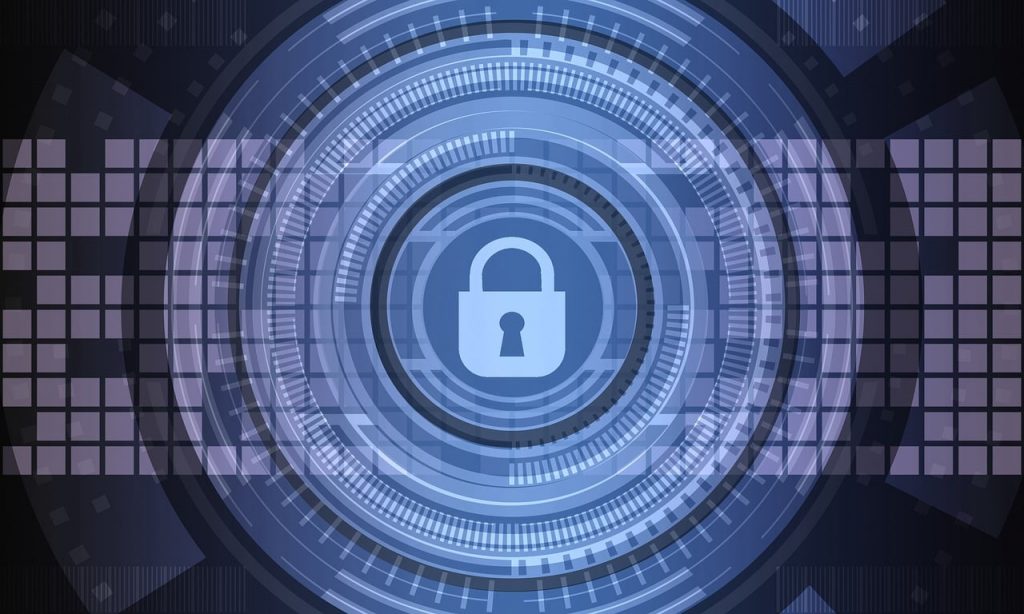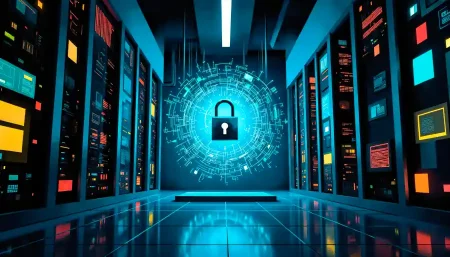A longstanding joke in the cybersecurity industry is that the only way to truly secure data and information is to store it offline on a machine that cannot be connected to power or the internet — and then lock it in a sealed cave…
Even then, it might not be 100% secure. So, what is the only logical way to keep data secure? Encrypt it. The study of cryptography isn’t new; it has existed for thousands of years. It is the process of hiding and coding communique to ensure that only the individual it was intended for can access it.

Before it was used in e-commerce, computer passwords, and bank cards, cryptography was used to code messages for thousands of years. For instance, many experts believe that ancient Egyptian hieroglyphs were actually secret codes known to very few people. Even Julius Caesar began using “Caesar cipher” around 50 B.C., growing wary of messengers to deliver messages to the battlefield.
Today, encrypting network traffic has become so ubiquitous that most people do not realise that encryption is taking place right in front of them. At the very basic level, communication between clients and web servers is encrypted in the form of standard TLS(Transport Layer Security) and SSL (Secure Sockets Layer) protocols. Of course, there are extremely advanced technologies too. In this article, we will explore how cryptography coincides with network security collide and its benefits.

What is cryptography and how does it relate to network security?
Cryptography uses encryption to prevent unauthorized access to sensitive data in transit or at rest by making it unintelligible without the right key. It safeguards information transfer and storage via networks, guaranteeing that only those individuals with authorized key scan access the encrypted data. The trick is that the system, which involves both a key and an algorithm, needs to be secure even if everything apart from the key was public knowledge.
Network security is a totality of all measures taken to protect an enterprise’s information and computer networks. The challenge is to keep the data accessible to anyone who requires it while also keeping it secure.
As a result, numerous network security management systems and programs are in use today that address regulatory issues and specific threats and exploits. Today, network architecture is complicated, and things become all the murkier with hackers constantly trying to exploit its weaknesses.
When connected to the enterprise network, they can access all packages traveling through it. Hence, with the rise insignificance of the internet, the importance of defining an enterprise’s cryptography requirements became all the more overarching.

What are the benefits of cryptography?
- Identity and access control: Cryptography ensures that only individuals with the necessary permissions have access to data and information.
- Protection from attackers: Cryptography can defend the system against cyber-attacks like man-in-the-middle and replay. Additionally, it keeps information private, thus helping protect the organization from the scare of private information being made public and identity theft.
- Secure communication: Encryption ensures the secure transmission of private information, passwords, bank details, and other sensitive data over the internet. Apart from the TSL and SSL protocols (employed almost everywhere), secure websites also employ HTTPS (Hypertext Transfer Protocol Secure) to help safeguard data and communique, helping protect it against DNS (Domain Name System) spoofing attacks
- Legal compliance: Last but not least, it helps enterprises comply with a multitude of legal requirements, such as data privacy and protection regulations.

What are some use cases for cryptography?
- Passkeys as identifiers: Using passkeys allow individuals to access accounts by approving the login on external devices without passwords. Since user-password lists are inherently insecure, cryptography seems to be moving towards passkeys to prove who one is and what they are allowed to access.
- Digital signatures: An excellent technique to add identity verification and integrity to sensitive information created and shared over networks is adding digital signatures using a combination of hash functions and public key cryptography.
- BYOD device encryption: With remote work on the rise, the use of DaaS (Desktop-as-a-service) has become quite prevalent. Most workplaces have free Wi-Fi for employees, who bring their own devices (computers, smartphones) access the enterprise network. Organizations could add BYOD (Bring Your Own Device)encryption to better their network security.

A quantum future
While many encryption algorithms are famed for being ‘impossible to reverse-engineer’ and ‘unbreakable,’ that is true only of current technology. With quantum computers on the horizon, that would break pretty much any current encryption system. And quantum is nota theoretical matter anymore. So, it is important to stay on top of the ever-evolving and expanding network security and cryptography landscape for keeping data secure.
With the right system tools and architecture, it is not beyond enterprises to keep their networks secure even in a quantum future. Pairing cryptography with scanning tools could be a step in the right direction, allowing scanning and automating the process of secret detection to keep data secure.
In case you missed:
- Is Quantum Computing a Threat to Blockchain Security?
- Why You Should Use Password Managers in 2025
- All About Privacy-Enhancing Technologies (PETS)
- The Good Samaritan: A Complete Guide To Ethical Hacking
- Blockchain-Based Digital Identity: The Future Of Verification Is Here
- Passwords vs. Passkeys: What Should We Be Using?
- Zero Trust Architecture: The Next Big Thing In Security
- Crypto Heists: How To Keep Your Cryptocurrency Safe?
- Keeping Your Tech Tidy: Tips For Data Backup And Safety
- Constant Vigilance: Why Cyber Hygiene And Digital Self-Care Are Important










